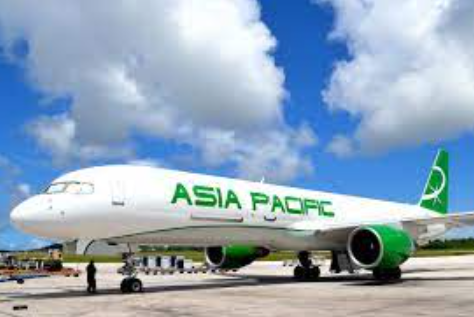Flyin’ High: Asia-Pacific Airlines Set Sights on 5% Sustainable Fuel Use by 2030

Introduction
So, buckle up, folks! The Association of Asia-Pacific Airlines (AAPA) has just pulled a rabbit out of its aviation hat. They’ve set a magic number for their 14 member airlines, like Air India, asking them to hit a 5% mark in using sustainable aviation fuel (SAF) by 2030. It’s like telling them, “Hey, let’s fly high, but make sure it’s eco-friendly, okay?”
Challenges and Significance
But, hold your horses. Even though it sounds like a fantastic plan, the aviation industry is like a plane trying to take off with a heavy suitcase. There’s not enough SAF available, and the cost is like a hidden baggage fee waiting to surprise you at the gate. AAPA says they want a ‘comprehensive approach,’ which basically means they’re open to any idea that doesn’t involve attaching wings to cows.
Global Mandates and Supply Concerns
Speaking of wings, some places like the European Union have already raised their hands saying, “We’re in!” But the AAPA is like your friend who won’t join a road trip until they’re sure there’s enough snacks. They want a stable supply of SAF before enforcing rules. Otherwise, it’s like asking everyone to dance when the DJ forgot to plug in his speakers.
National Initiatives in India
Guess what? India is not just into spicy food; they’re into spicy aviation too. They want 1% SAF in domestic flights by 2025, and by 2030, they plan to hit 5%. But here’s the catch – if the supply side isn’t sorted, these plans might end up being more turbulent than a flight through a thunderstorm.
Industry Perspective on Price Differential
Now, let’s talk about money. Airlines, like Cathay Pacific, want the price of green fuel to be a bit more down-to-earth. They’re pushing for a policy that doesn’t turn sustainable fuel into a luxury item. After all, going green shouldn’t feel like upgrading to first class – it should be a comfy ride for everyone.
Progress in India and Global Impact
India is not just about Bollywood and cricket; they’ve got SAF demonstrations too. Spice Jet and Air Asia India are like the eco-warriors of the skies, blending SAF into their flights. It’s like they’re saying, “Move over, emissions, we’re flying with a conscience now.”
Global Targets and Progress
But, there’s a bigger picture here. The International Civil Aviation Organization set a goal in 2016 – no carbon growth after 2019, and zero emissions by 2050. It’s like a New Year’s resolution for the whole world. However, the reality check is this: in 2022, SAF production was just a tiny 0.1% of all aviation fuel. It’s like saying, “We’re aiming for the stars, but right now, we’re still trying to get off the launchpad.”
So, there you have it, folks. The aviation industry is on a green mission, but it’s still figuring out how to soar without burning a hole in the ozone layer. Fasten your seatbelts, it’s going to be a bumpy, but hopefully, eco-friendly ride!




